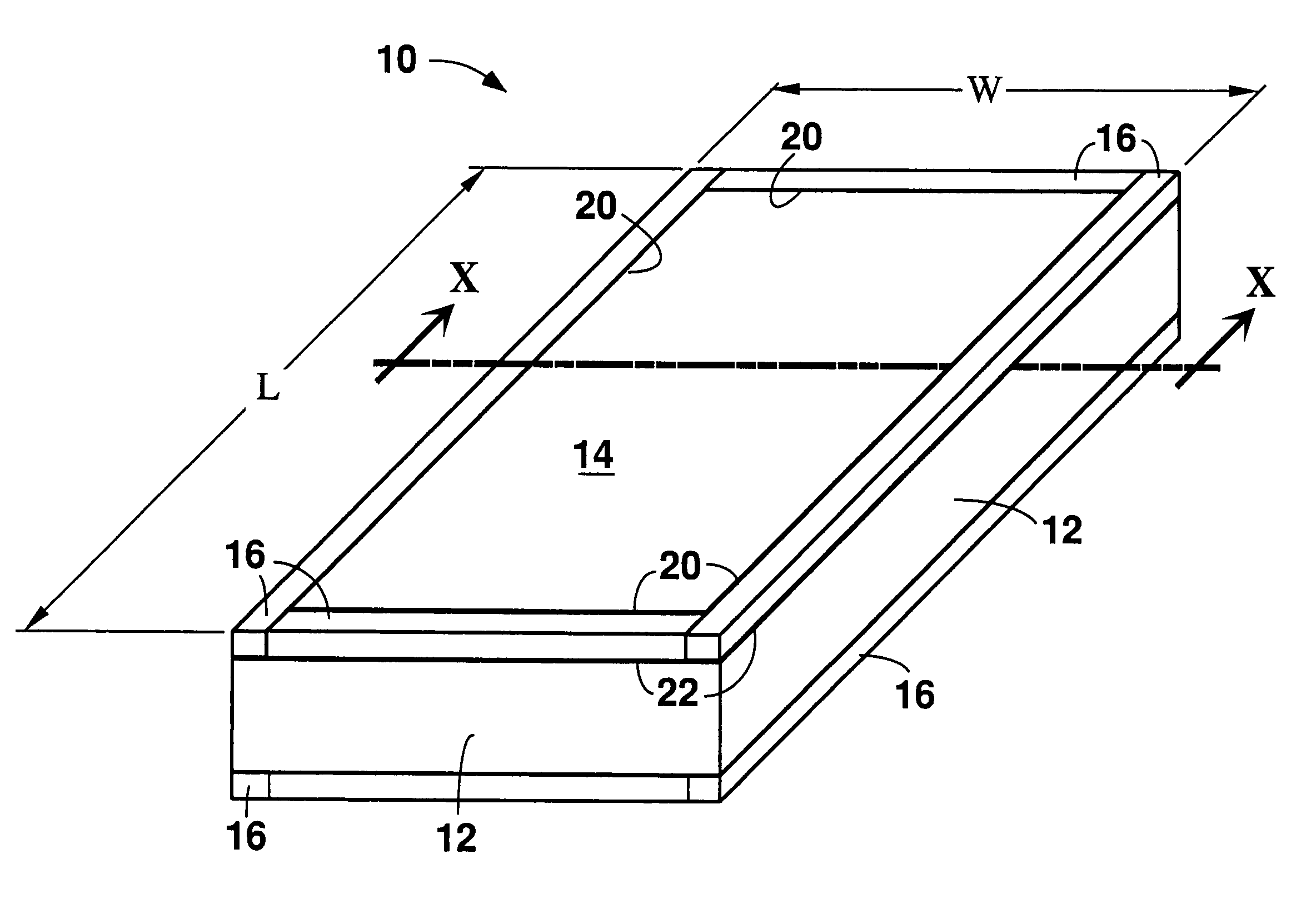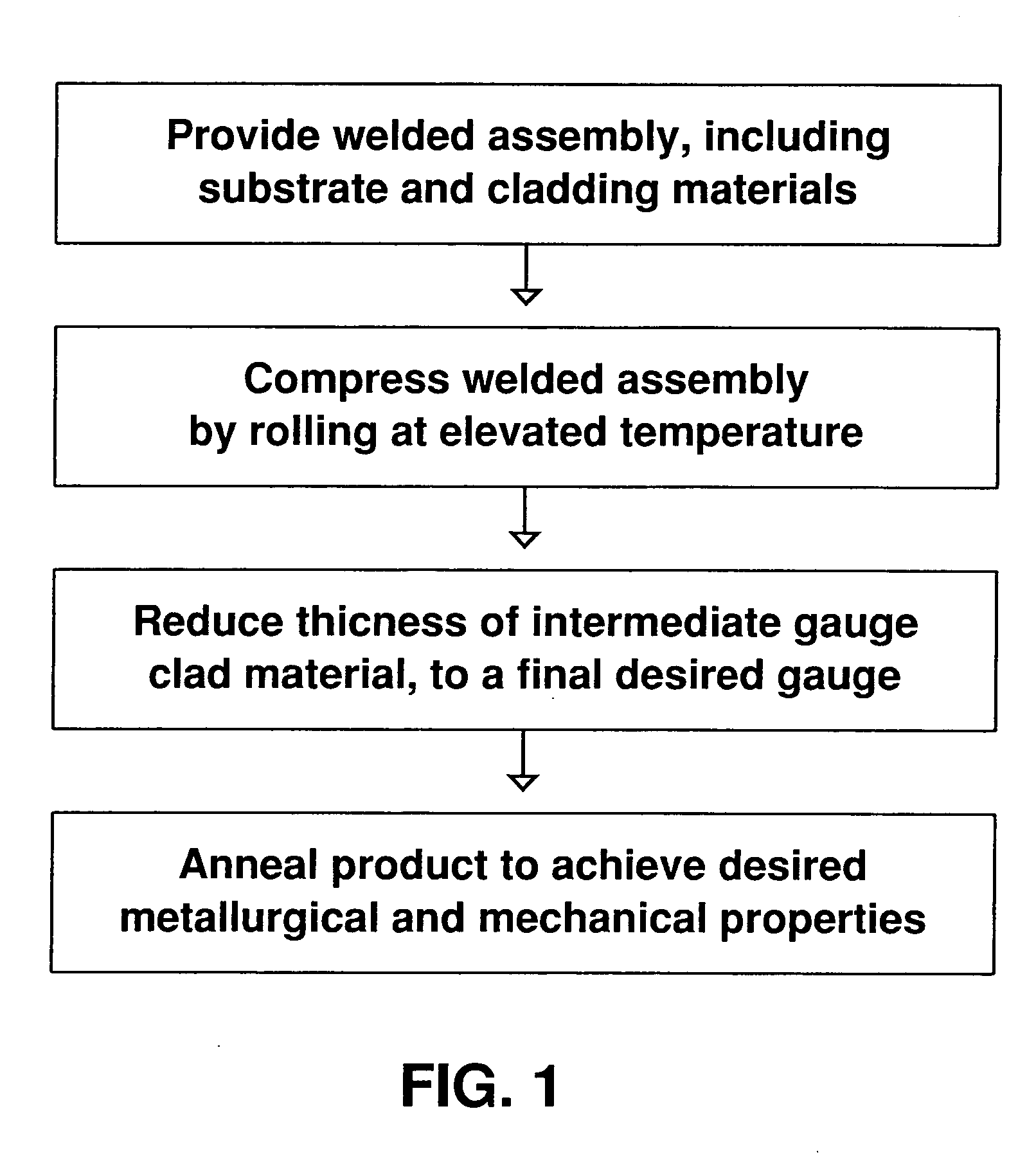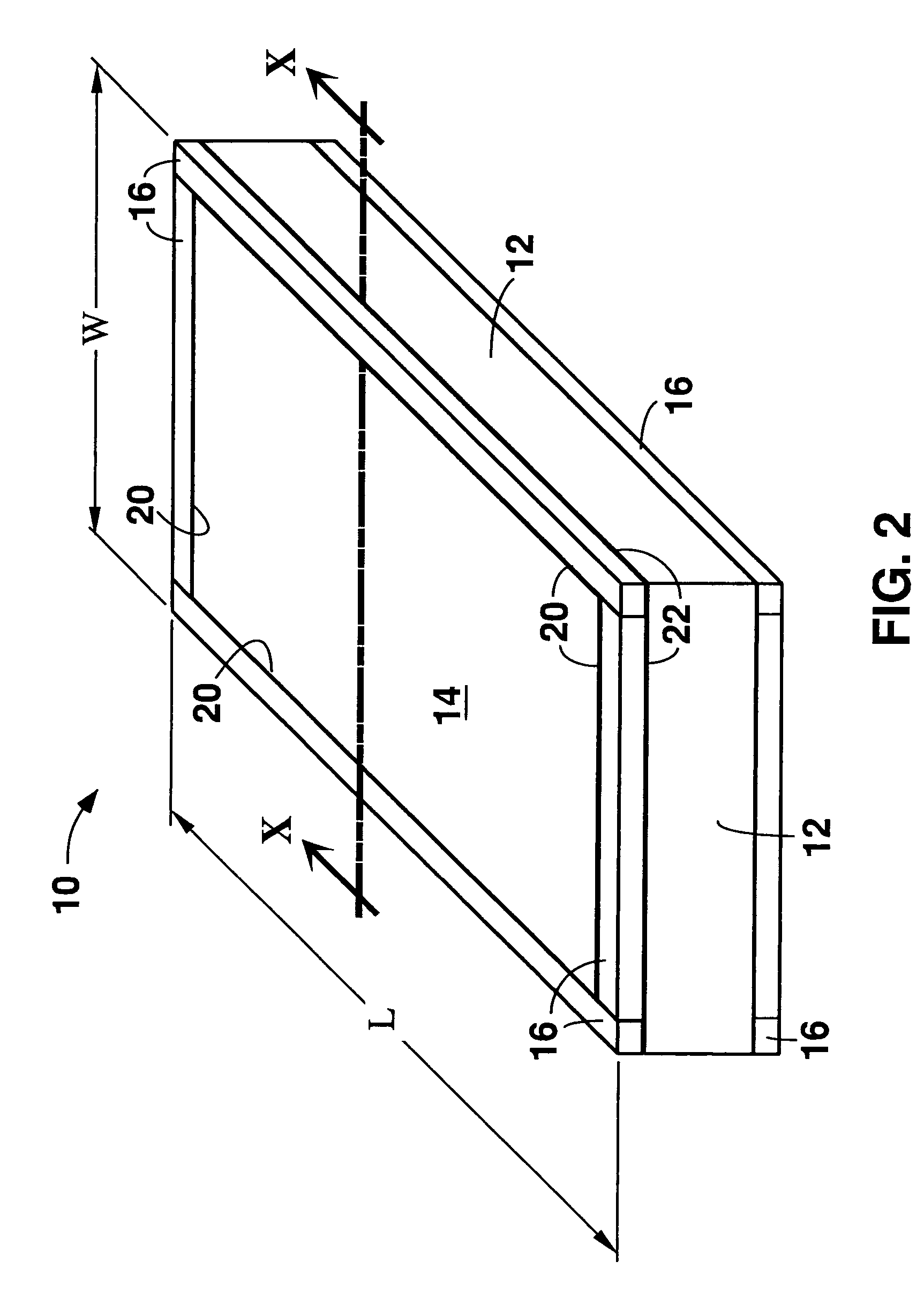Clad alloy substrates and method for making same
a technology of clad alloy substrates and clad alloy layers, which is applied in the direction of metal-working equipment, non-electric welding equipment, casting equipment, etc., can solve the problems of non-uniform, wavy interface between the substrate and the cladding layer, and add substantially to the cost of finished clad material
- Summary
- Abstract
- Description
- Claims
- Application Information
AI Technical Summary
Benefits of technology
Problems solved by technology
Method used
Image
Examples
example 1
[0069] A welded assembly was prepared to produce a nickel double-clad stainless steel. The assembly comprised a 2 to 2½ inch thick T-316L stainless steel plate sandwiched between two ½ to ¾ inch thick nickel (UNS 02201) plates. The length and width dimensions of the nickel cover plates were smaller than the stainless steel core plate, and the nickel plates were centered on the faces of the stainless steel core plate. In this way, a margin was left around the perimeter of each face of the core plate that was not covered by the cover plate disposed on the face. A frame constructed of ½× 1 / 2 inch thick T-304 stainless steel bar stock was positioned in the margin on each face of the core plate, around the periphery of each of the cover plates. The stainless steel frame was intended to “dam” the lower hot strength (and therefore more fluid) nickel during hot rolling and to inhibit or prevent the nickel material from flowing beyond the edges of the core plate material as the entire assemb...
example 2
[0078] A welded assembly constructed substantially the same as in Example 1 was prepared. As in the assembly of Example 1, a 1 / 2 inch gap was left between each of the nickel cover plate edges and the edges of the stainless steel framing material. In order to provide extra support against any lateral movement of the cover plates during rolling, but to still allow space for the cladding material to flow, two short end dams were designed into the framing elements such that each included two ½ inch tabs that mate flush against the adjacent cover plate. This arrangement is shown in FIG. 13, which shows one surface of the assembly 310 in which nickel plate 312 and T-304 stainless steel framing elements 314, 316 are positioned on T-316L stainless steel plate 318. Opposed framing elements 314 include tabs 320 flush with the adjacent cover plate 312. The nickel cover plates and framing elements 314, 316 were then welded in place on the stainless steel core plate 318 in a manner similar to th...
example 3
[0081] Observation of the assemblies of Examples 1 and 2 above indicated that the nickel cover plate material did not flow over the stainless steel framing and was fully contained within the framing during hot rolling reduction. Thus, the % inch gap between cover plates and the framing elements was eliminated in the assembly of this Example 3. It is believed that such design may provide a higher yield of double-clad material since without the gaps the cover plate can cover a larger percentage of the surface width of the core plate. FIG. 15 shows the welded assembly 410 of Example 3 with the cover plate 412 welded to the butted-up framing elements 416 and the framing elements 416 welded to the core plate 414. As shown in FIG. 15, hydraulic tubing 420 was welded to an evacuation bore in the side of the 2-inch thick core plate 414. The evacuation bore passed into the core plate 414 and intersected at a right angle with a bore drilled entirely through the core plate 414, opening at the ...
PUM
| Property | Measurement | Unit |
|---|---|---|
| Length | aaaaa | aaaaa |
| Width | aaaaa | aaaaa |
| Strength | aaaaa | aaaaa |
Abstract
Description
Claims
Application Information
 Login to View More
Login to View More - R&D
- Intellectual Property
- Life Sciences
- Materials
- Tech Scout
- Unparalleled Data Quality
- Higher Quality Content
- 60% Fewer Hallucinations
Browse by: Latest US Patents, China's latest patents, Technical Efficacy Thesaurus, Application Domain, Technology Topic, Popular Technical Reports.
© 2025 PatSnap. All rights reserved.Legal|Privacy policy|Modern Slavery Act Transparency Statement|Sitemap|About US| Contact US: help@patsnap.com



